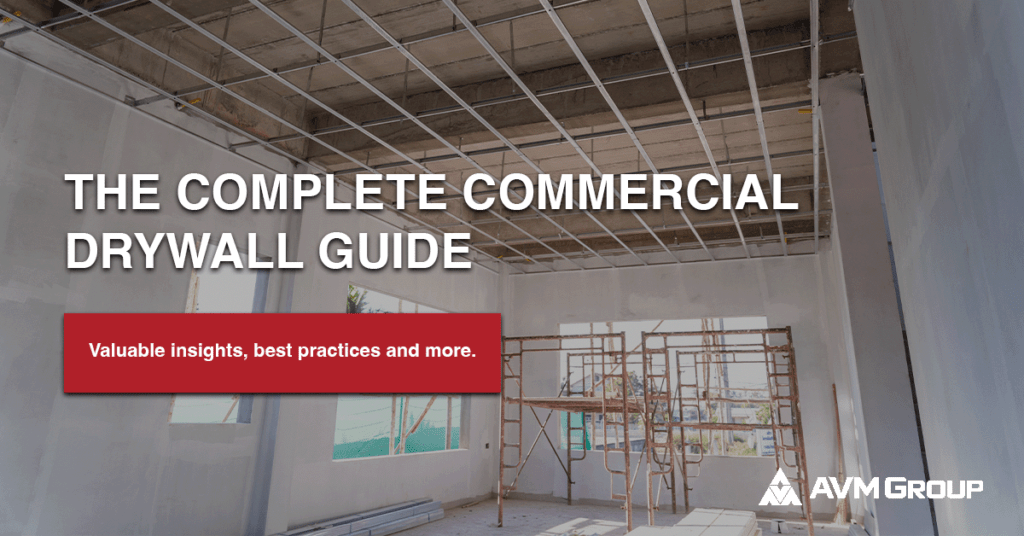*This post is a pillar post for commercial drywall. Multiple in-depth blog posts have been linked throughout this article for more information on specific topics.
Table of Contents
ToggleIntroduction
Commercial Drywall is a fundamental component of commercial construction projects, playing a crucial role in creating functional and aesthetically pleasing interior spaces.
In this comprehensive guide, we’ll delve into every aspect of commercial drywall, providing valuable insights and best practices for achieving successful installations. As experts in this field, we feel like we have a lot of great information to offer.
Whether you’re a contractor, architect, or business owner, understanding the nuances of commercial drywall is essential for creating durable, safe, and visually appealing spaces.
Understanding Commercial Drywall
In this beginning section, we’re going to give a bit of a basic overview of what drywall is, and how it’s commonly used in commercial construction. We’ll also go over different types of drywall, and what some common sizes and thicknesses you’ll typically see in a commercial build.
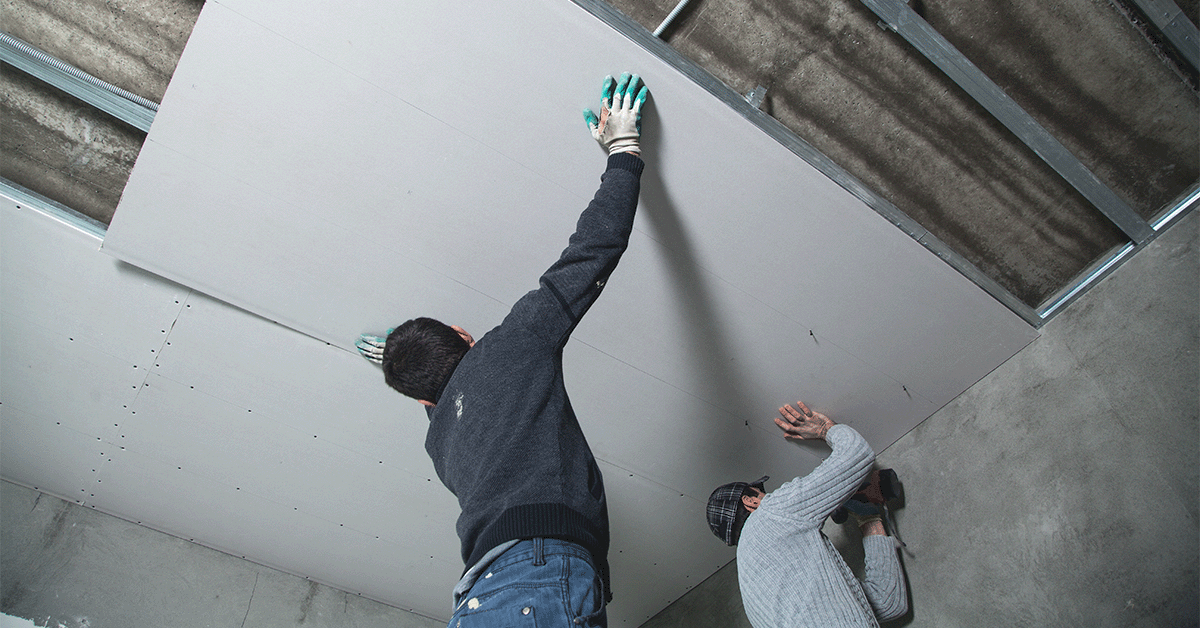
Why Do Commercial Buildings Need Drywall?
Commercial drywall, also known as gypsum board or plasterboard, is a building material consisting of a gypsum core encased in paper.
It is commonly used to create interior walls and ceilings in commercial buildings due to its versatility, cost-effectiveness, and ease of installation.
Drywall serves as a base for various finishes and provides a smooth and consistent surface.
GET THE LATEST INDUSTRY NEWS DELIVERED TO YOUR INBOX
Stay on the forefront of the construction industry with our weekly e-newsletter.
The Different Types of Commercial Drywall
Standard drywall is suitable for most commercial applications, while moisture-resistant drywall is ideal for areas prone to high humidity, such as bathrooms and kitchens found in office buildings.
Fire-resistant drywall offers enhanced safety by providing additional time in the event of a fire. Understanding the appropriate material for your project is essential for long-term performance.
There are, of course, many more types of drywall than just those we briefly discussed here. Check out this chart for quick reference to all of the different types of drywall that exist.
Also, click here for our full guide on the different types of commercial drywall.

Common Sizes for Commercial Drywall Panels
Commercial drywall panels come in standard sizes and thicknesses. Of course, your commercial drywall installer can cut these panels to suit any building’s needs. The most common panel sizes are 4’x8′ and 4’x12′, while thicknesses range from 1/4″ to 5/8″.
The selection of panel size and thickness depends on factors such as structural requirements, desired soundproofing, and fire resistance.
Choosing the right size and thickness ensures optimal performance and ease of installation. It’s important to do this right the first time in order to prevent any unnecessary drywall damage.
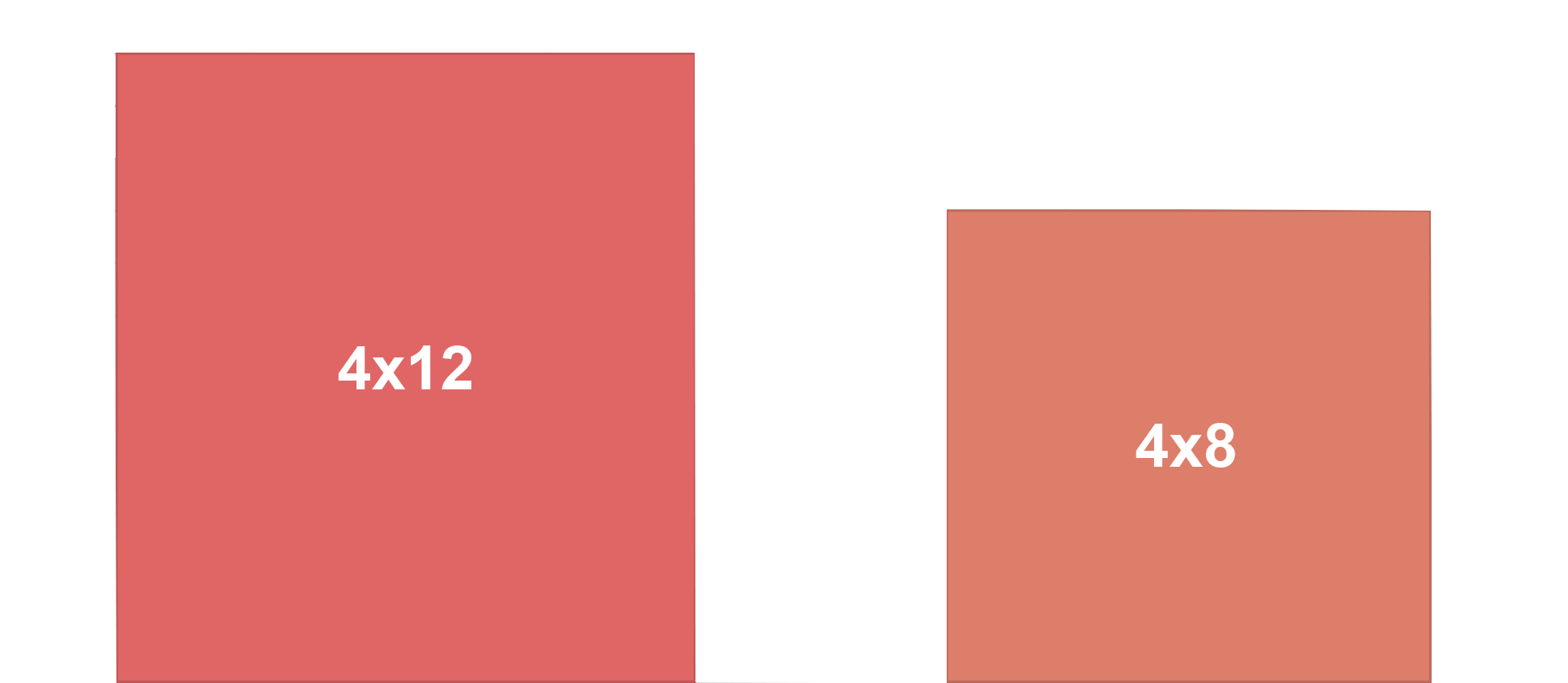
The Benefits of Using Drywall in Commercial Builds
Drywall offers several advantages that make it a popular choice for commercial construction. It is lightweight, making it easy to handle and install. Drywall is also cost-effective, reducing construction expenses without compromising quality.
Moreover, it provides a smooth and even surface for various finishes, such as paint or texture. Additionally, drywall is highly customizable, allowing for the incorporation of electrical and plumbing components with relative ease. It also allows you to have better indoor air quality throughout your building.
Now that we’ve gone extensively through a general overview of commercial drywall, let’s talk about some things that both the client and contractor need to consider before installing the drywall itself.
Pre-Installation Considerations for Commercial Drywall
Like we mentioned, this section will serve as a checklist of sorts to use when deciding between the various different types of drywall for your project. Make sure to come back and reference this during the planning stages of your project.
Assessing Project Requirements
Before embarking on a commercial drywall installation project, a thorough assessment of project requirements and careful examination of architectural plans are essential.
Understanding the building layout, room dimensions, and design elements will help determine the quantity of drywall materials needed and inform other installation decisions.
Normally, the general contractor (GC) will handle this, but it’s important to have a good grasp on it as the client. If you’re a general contractor, check out this blog on how to best work with commercial sub-contractors, like us.

Determining the Quantity of Drywall Materials Needed
Accurate estimation of the required quantity of drywall materials is crucial for budgeting and efficient project management.
Taking precise measurements and factoring in any special considerations, such as windows, doors, and irregular wall shapes, will help determine the number of drywall panels required. Consulting with suppliers and experienced professionals can ensure an accurate estimation.
As drywall professionals, we handle this. Our expert team of estimating professionals will guarantee only the exact amount of material for your project is ordered, saving you money.
Selecting the Right Thickness and Type for Your Build
Based on project specifications and requirements, selecting the appropriate drywall thickness and type is vital. Thicker drywall panels offer improved soundproofing and fire resistance, while standard thickness is suitable for most commercial applications.
Moisture-resistant drywall is essential for areas prone to moisture, such as bathrooms and kitchens.
Planning for Electrical and Plumbing Penetrations in the Drywall
To accommodate electrical wiring, plumbing, and other utilities, careful planning and coordination with other trades are necessary.
Marking the locations of penetrations on the drywall panels before installation ensures precise cuts and minimizes the risk of damage.
Collaboration between the drywall installer (AIR NEO) and other trades during the planning phase is crucial for a smooth installation process.

Preparing the Work Area and Ensuring Safety Measures are in Place
Before commencing the installation, it is essential to prepare the work area adequately.
This includes clearing the space of any debris, protecting floors and furniture, and establishing a safe working environment.
Implementing safety measures, such as wearing appropriate protective gear, using ladders or scaffolding correctly, and adhering to industry safety standards, ensures the well-being of workers throughout the installation process.
Okay, you should have a good understanding of what we prepare for before installing your commercial drywall. Now, let’s talk about the different texture and surface options available for your commercial building.
GET THE LATEST INDUSTRY NEWS DELIVERED TO YOUR INBOX
Stay on the forefront of the construction industry with our weekly e-newsletter.
Texture and Surface Finishes
In this section, we’ll go over the different texture options that exist, review some techniques that we use for achieving different textures, and discuss using paint on your finished drywall.
Overview of Different Texture Options for Commercial Drywall
Texture options for commercial drywall provide aesthetic appeal and add dimension to interior spaces. Popular texture styles include smooth, orange peel, knockdown, popcorn, and stomp.
Each texture option offers a unique visual effect and can be customized to suit the design and functionality requirements of the space. Check out this infographic of the different types of textures.
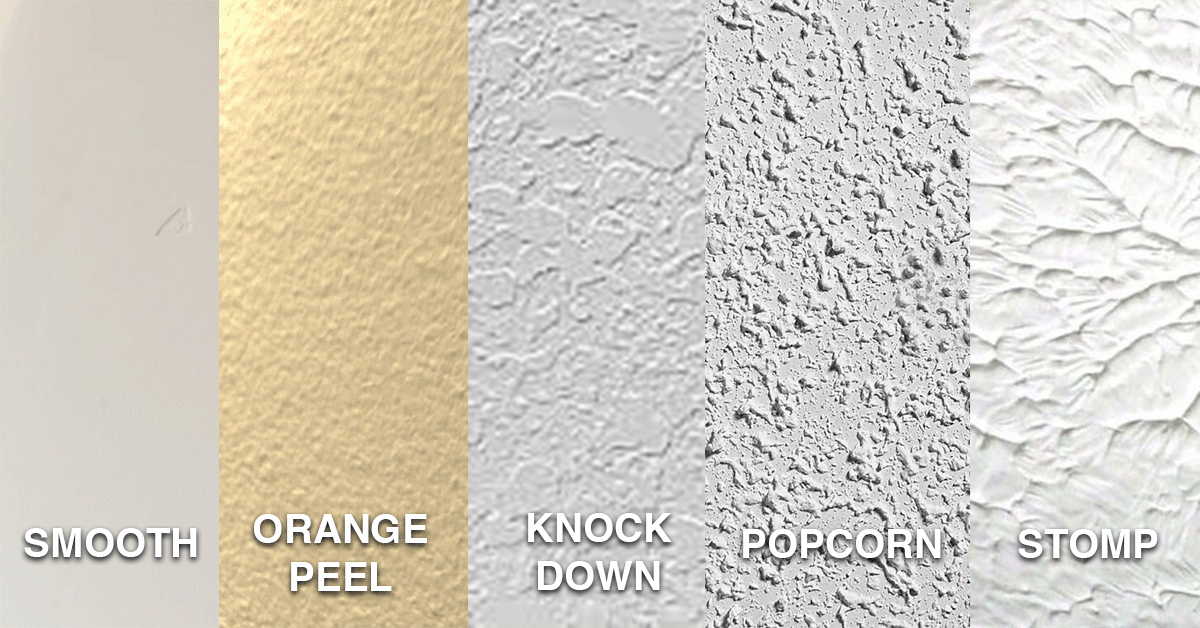
Techniques for Applying Texture: Including Spraying and Hand Techniques
Applying texture can be done using various techniques, such as spraying or hand application.
Spraying techniques involve using specialized equipment to apply texture compounds evenly.
Hand techniques, including troweling or using texture brushes, provide more control and allow for custom patterns or designs. Practicing the chosen technique and ensuring consistency across large areas and transitions is crucial for a professional-looking finish.
Choosing the Right Texture Based on Design and Functionality
When choosing the right texture for a commercial project, considering design and functionality is paramount. Textured finishes can hide imperfections, add visual interest, or enhance acoustics.
Smooth finishes offer a contemporary and sleek look, while textured finishes provide a rustic or artistic appeal. Additionally, considering maintenance requirements and the durability of the texture is important for long-term satisfaction.
Achieving Consistent Texture Across Large Areas and Transitions
Maintaining consistent texture across large areas and transitions is essential for a cohesive look.
Proper preparation of the drywall surface, including priming and sealing, ensures consistent absorption of texture compounds.
Applying texture in even and overlapping patterns, using the same technique and consistency throughout, helps achieve uniformity.
Regularly stepping back to assess the overall texture distribution and making necessary adjustments promotes visual harmony.

Applying Primers and Paints to Your Drywall
Applying primers and paints is the final step in achieving a finished look for commercial drywall installations.
Primers provide a smooth and sealed surface, ensuring proper adhesion and promoting paint durability.
Choosing the right paint finish, whether matte, satin, or gloss, depends on the desired aesthetic and functionality.
Proper paint application techniques, such as using rollers or brushes, ensure an even and professional finish.
Now, let’s look at some of the different acoustical considerations that are important when constructing commercial buildings.

Acoustical Considerations for Commercial Drywall
In this section, we’ll talk about why acoustics are so important in commercial spaces, some of the different soundproofing techniques that exist, how to pick the right acoustic material, and best practices for reducing sound transmission through your walls.
The Importance of Acoustics in Commercial Spaces
Acoustics play a crucial role in creating comfortable and functional commercial spaces.
Proper sound control and noise reduction enhance productivity, speech intelligibility, and overall occupant satisfaction.
Considering acoustical aspects during the drywall installation process ensures optimal sound performance in various environments, such as offices, restaurants, or theaters. Acoustical ceilings also play a really significant role in this.
Soundproofing Techniques for Commercial Drywall Installations
Soundproofing techniques help minimize sound transmission between rooms or from external sources. Insulation materials with high sound transmission class (STC) ratings can be installed within wall cavities to reduce airborne noise.
Resilient channels or sound isolation clips provide decoupling between drywall and framing, further reducing sound vibrations. Incorporating sound-absorbing materials, such as acoustic panels or fabric-wrapped panels, can enhance overall sound quality.

Selecting Appropriate Acoustical Materials: Insulation and Other Resilient Channels
Choosing the right acoustical materials is critical for achieving desired sound control. Acoustic insulation, such as fiberglass or mineral wool, effectively absorbs sound energy.
Resilient channels or sound isolation clips provide isolation between drywall and structural framing, minimizing sound vibrations.
Additionally, soundproof drywall or mass-loaded vinyl can be used for enhanced sound reduction in specific applications.
Best Practices for Reducing Sound Transmission through Drywall
Reducing sound transmission through drywall involves attention to detail during installation.
Proper sealing of joints and seams minimizes sound leakage.
Using acoustical caulks or sealants helps create an airtight barrier. Additionally, ensuring proper fastening techniques and avoiding rigid connections between drywall panels and structural framing reduces sound flanking paths.
Collaborating with Acoustical Consultants for Optimal Results
For complex or specialized acoustical requirements, collaborating with acoustical consultants is advisable.
Acoustical consultants can provide expert advice on sound control strategies, material selection, and custom solutions tailored to specific project needs. Their expertise ensures that acoustical goals are met effectively and efficiently.
Arguably just as important, fire resistance and safety should be top of mind for any commercial build.
Fire Resistance and Safety
In this section, we’ll talk about the importance of fire-resistant drywall, talk about the different types of fire-resistant drywall that exist, and how you can incorporate them successfully into your commercial building.

The Importance of Fire-Resistant Commercial Drywall
Like we mentioned, fire safety is of paramount importance in commercial settings.
Fire-resistant drywall offers enhanced protection by providing additional time in the event of a fire.
It is designed to slow down the spread of flames, reducing property damage and providing occupants with more time to evacuate safely.
Fire-resistant drywall is a huge part of passive fire prevention.
Check out this guide we wrote covered everything related to passive fire prevention.
Fire-Resistant Drywall Options
Different types of fire-resistant drywall are available, each with specific fire-rated properties. Previously mentioned in an above section, Type X drywall offers increased fire resistance due to the inclusion of glass fibers and other additives and Type C drywall provides enhanced fire and impact resistance.
Understanding the specific requirements and fire safety codes for the project ensures the selection of the appropriate fire-resistant drywall.
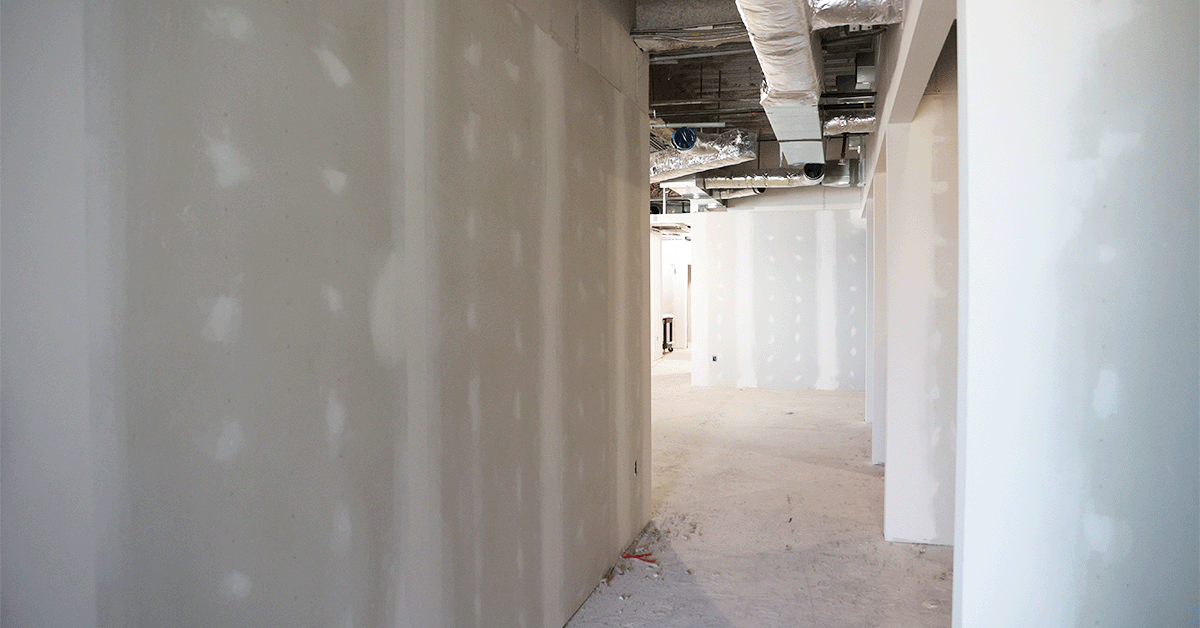
Incorporating Fire-Stopping and Fire-Rated Assemblies during Drywall Installation
Incorporating fire-stopping measures and fire-rated assemblies is crucial for maintaining fire barriers in drywall installations.
Fire-stopping materials, such as fire-rated caulk or sealants, prevent the spread of flames and smoke through openings, such as electrical or plumbing penetrations. Fire-rated assemblies, including fire-rated doors, partitions, and ceilings, ensure compartmentalization and contain the spread of fire.
Compliance with Fire Safety Codes and Regulations
Like we mentioned before, compliance with fire safety codes and regulations is mandatory in commercial construction. Familiarizing oneself with local building codes, fire safety standards, and relevant regulations is essential.
Working closely with fire safety professionals, such as fire inspectors or consultants, ensures adherence to the required fire safety guidelines and ensures a safe and code-compliant installation.
GET THE LATEST INDUSTRY NEWS DELIVERED TO YOUR INBOX
Stay on the forefront of the construction industry with our weekly e-newsletter.
Collaborating with Fire Safety Professionals
Collaborating with fire safety professionals, such as fire engineers or consultants, provides expert guidance throughout the project. Their expertise ensures compliance with fire safety codes, optimal selection of fire-resistant materials, and proper installation techniques.
Working together with fire safety professionals promotes a comprehensive approach to fire safety and fosters a safer working and living environment. Now, let’s talk about a very important aspect of drywall, maintenance and repair.

Drywall Maintenance and Repair
Maintenance and repairs of drywall is a topic we’ve written extensively about in the past, so expect a lot of relevant blogs linked in this section. We’ll talk about some basic maintenance practices, and go a little into DIY drywall repairs, which we don’t recommend for our clients for a number of reasons.
Routine Maintenance for Commercial Drywall
Routine maintenance practices help prolong the life and appearance of commercial drywall.
Regular cleaning using non-abrasive methods removes dirt, dust, and stains. Promptly addressing any signs of damage or wear, such as dents, scratches, or water damage, prevents further deterioration.
Inspecting the drywall periodically for signs of cracks or deterioration allows for early detection and timely repairs.
Dents, Scratches and Water Damage
Dents, scratches, and water damage are common issues that can occur in commercial drywall.
Repairing minor dents or scratches involves filling the damaged area with joint compound, sanding it smooth, and blending it with the surrounding surface. Water damage requires identifying the source of the moisture, repairing it, and replacing the damaged drywall if necessary.
Patching and Repairs
Patching and repairing damaged drywall areas involve cutting out the damaged portion, preparing the area, and installing a new piece of drywall. Proper taping, joint finishing, and blending techniques ensure a seamless repair.
Matching the texture and finish of the existing drywall promotes a cohesive look. Again, WE DO NOT recommend doing DIY drywall repair. Please, contact us so we can make sure the repair is done right.
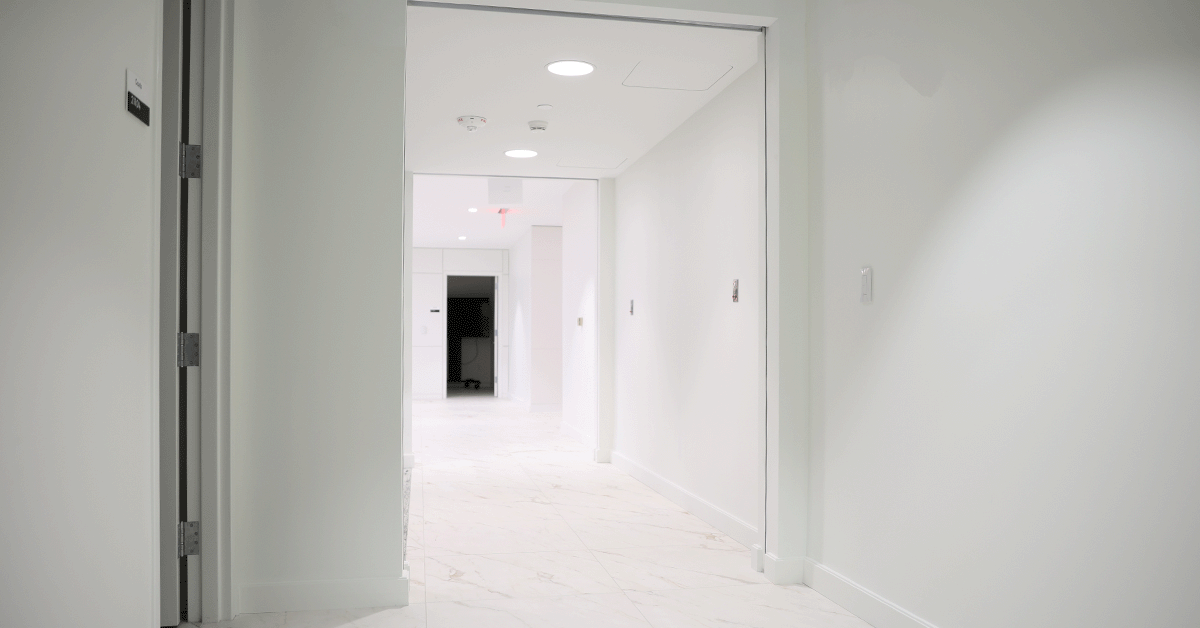
Maintaining Texture and Finish Integrity
Maintaining the integrity of texture and finishes during repairs is crucial for a consistent appearance.
Taking care to match the texture pattern and applying texture compounds or paints to the repaired area ensures a seamless blend with the surrounding surface.
Feathering the edges of the repair and gradually increasing the texture thickness helps achieve a visually consistent result.
Hiring Professional Contractors
For complex repairs or renovations (we recommend doing this for every repair), engaging professional drywall contractors is advisable. Professional contractors such as ourselves have the expertise, tools, and knowledge to tackle complex projects effectively.
We can provide guidance on material selection, offer seamless repairs, and ensure the project meets safety and quality standards.
Conclusion
Throughout this comprehensive guide, we have covered various aspects of commercial drywall installation.
We explored the importance of drywall in commercial construction, pre-installation considerations, installation techniques, taping and joint finishing, texture and surface finishes, acoustical considerations, fire resistance and safety, maintenance and repair, and the significance of collaborating with professionals.
Proper installation techniques, meticulous finishing, and adherence to safety considerations are paramount in commercial drywall projects. Attention to detail during each phase of the installation ensures a durable and visually appealing result.
Proper finishing techniques, including taping, joint compound application, and texture application, enhance the aesthetics and longevity of the drywall. Additionally, prioritizing safety measures throughout the installation process protects the well-being of workers and occupants.
We encourage readers to apply the insights, tips, and best practices shared in this guide to their commercial drywall projects.
By understanding the importance of each step, collaborating with professionals when necessary, and maintaining a focus on quality and safety, readers can achieve successful and durable commercial drywall installations.
The knowledge and expertise gained from this guide should empower you to tackle your next commercial drywall project with confidence, ensuring exceptional results.

